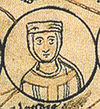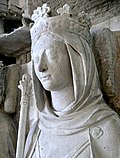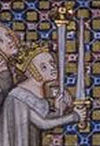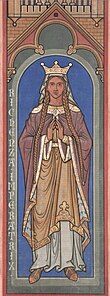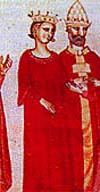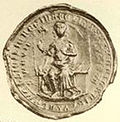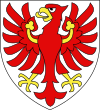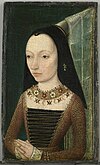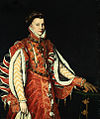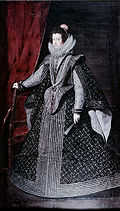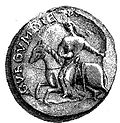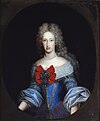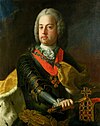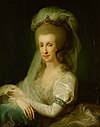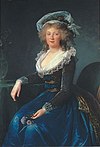This article lists queens, countesses, and duchesses consort of the Kingdom, County, Duchy of Burgundy.
Contents
- Queen consort of Burgundy
- Queen consort of the Burgundians (till 534)
- Frankish Burgundy (534–855)
- Lower Burgundy (855–863)
- Upper Burgundy (855–1032)
- Holy Roman Empress, Queen consort of the Kingdom of Burgundy (1032–1378)
- Countess consort of Burgundy
- House of Ivrea (995–1190)
- House of Hohenstaufen (1190–1231)
- House of Andechs (1231–1279)
- House of Ivrea (1279–1330)
- House of Burgundy (1347–1361)
- House of Capet (1361–1382)
- House of Valois-Burgundy (1405–1482)
- House of Habsburg (1482–1678)
- Duchess consort of Burgundy
- Independent Burgundy (880–1044)
- Burgundy under the French (1044–1477)
- Burgundy in pretension (1477–1477)
- Notes











